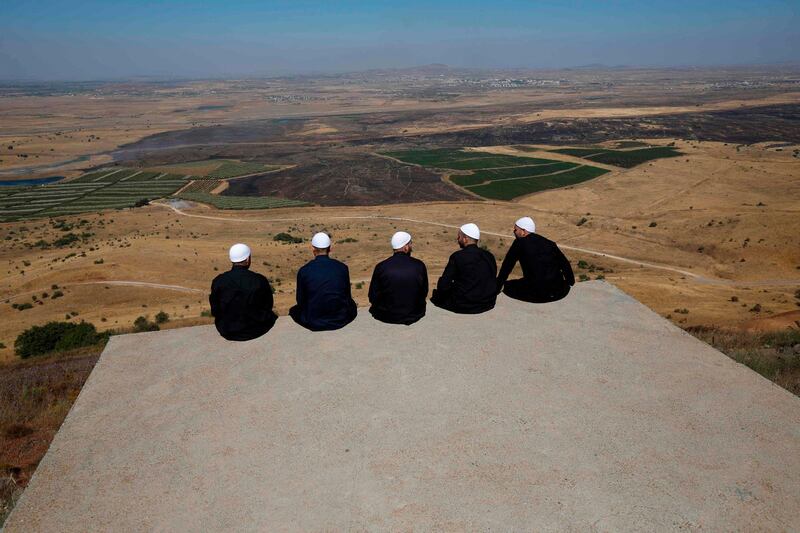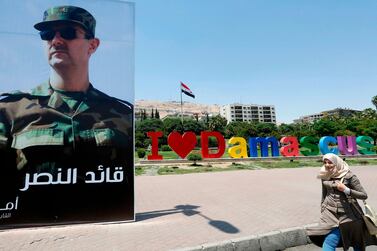Young people marched against the Assad family's rule in Syria’s Druze heartland on Sunday as a currency collapse sped up, hitting livelihoods across regime areas.
Suwayda24, a network of citizen journalists in the region, broadcast footage of dozens of men in their twenties briskly marching through a market in Suweida, the provincial capital of the agricultural governorate.
“Syria is ours and does not belong to the Assads,” they are heard chanting in the video.
“Bashar: leave,” another group of young men and women, who were mostly children when the Syrian revolt broke out in 2011, chanted in a main street.
The renewal of protests in Suweida highlights problems facing the Alawite-dominated regime of President Bashar Al Assad in dealing with deteriorating living standards and members of another minority who do not toe the line.
In January, brief demonstrations broke out in the mostly Druze city near the border with Jordan, with the theme, “We want to live”, amid a dive in the Syrian lira, also called the pound.
The authorities partly placated the demonstrators by organising a public campaign called “The lira is our pride”.
Merchants in Suweida and some other cities were forced to sell their wares for 1 lira to symbolise that rises in prices caused by the currency collapse would be short-lived.
But on Sunday the lira was 2,600 to the dollar, compared with 2,000 last week and 1,400 pounds when demonstrations briefly occurred in Suweida in January.
The figures are from the Syrian Pound Today, a site that tracks the black market for the currency in Damascus.
The currency downfall is tied to the financial crisis in Lebanon and the regional effects of the coronavirus, and toughened US penalties on business dealings with the regime, which come into effect this month.
Another group of Druze youths at a main square in Suweida invoked on Sunday Sultan Basha Al Atrash, leader of the 1925-1927 revolt in the colonial era, which French troops ultimately crushed.
“God rest your soul, Sultan Basha. The homeland now belongs to Iran,” they said.
Members of the Sunni merchant class in Damascus joined Sultan Basha and helped to spread the revolt across Syria, although Christian and Alawite communities largely supported the French or remained on the sidelines.
Unlike Sunni regions, where the regime largely views the population as expendable, the authorities have been more hesitant to use force to quell Druze dissent since 2011.
The Druze resisted conscription into the regime’s military since the revolt broke out nine years ago in the bordering province of Deraa.
But the civil war revived old property disputes with Sunni Bedouin in outlying regions and with rural Sunnis from Deraa.
The ascendency of militant groups, who overtook anti-Assad rebel brigades, further alienated the Druze from the revolt.
A significant proportion of the heavily armed community entered into a tactical alliance with the regime, despite lack of affinity between the two sides.
The pro-regime Druze militias that were formed in Suweida were partly checked by more independent armed members of the Druze, as well as other militia from the community supported by Russia to counterbalance the spread of Hezbollah.
The currency was trading on the eve of the revolt at about 50 lira to the dollar. At the start of Assad family rule in 1970, it was about four.







